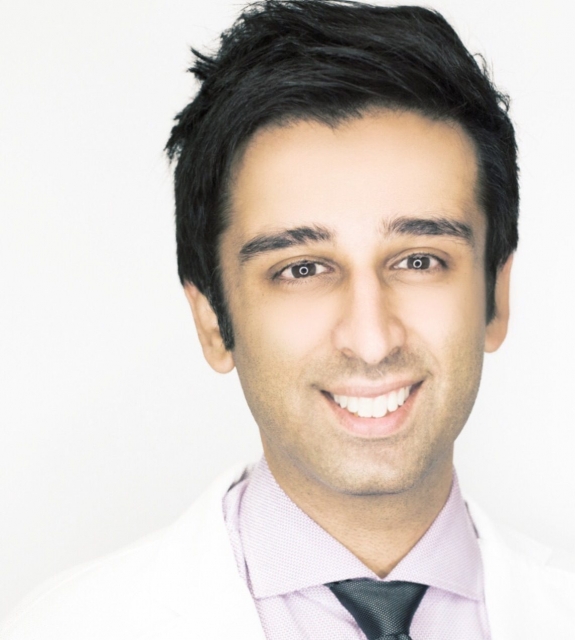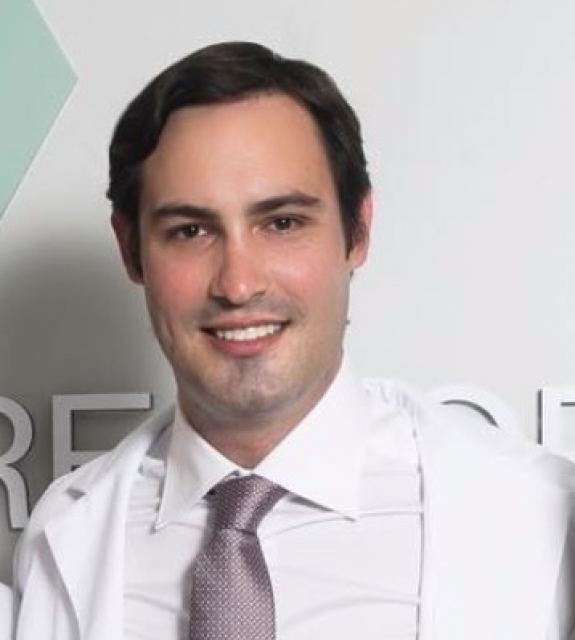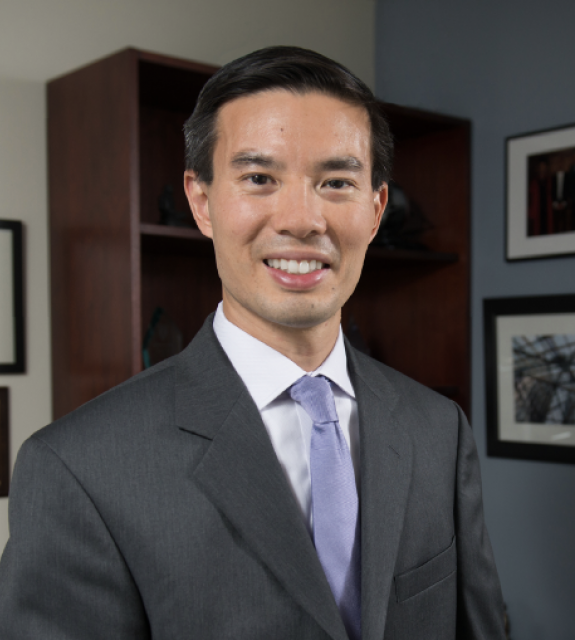Dr. Demetri Arnaoutakis specializes in facial plastic surgery and hair restoration. He is an active member of the American Academy of Facial Plastic and Reconstructive Surgery and frequently travels to attend national conferences to perpetually advance his education and present his research. To date he has authored over 30 peer-reviewed publications and book chapters. Haute Beauty chats with the hair restoration expert representing the Los Angeles market about your options when it comes to a permanent hair restoration solution.
HB: What is the type of minimally invasive grafting procedure you offer for hair restoration?
In the United States, hair loss affects approximately 40 million men and nearly 21 million women. Over 40% of men will have noticeable hair loss by the time they turn 35 years old. For those considering a permanent solution, Follicular Unit Transfer (FUT) and Follicular Unit Extraction (FUE) are the mainstays to hair transplantation.
Follicular Unit Transplantation (FUT) is a surgical procedure that involves transplanting hair from a donor area (your scalp) to the areas that are bald or thinning. The donor site in FUT is typically in the back of the scalp, in which a group of 1 to 4 hairs (or follicular unit) is sliced off from a thin donor strip. Once the follicular unit is removed, doctors and hair techs will prepare the graft follicles for permanent implantation with precise microscopic dissection techniques.
If you prefer a shorter hairstyle or want to avoid scarring, you may want to consider Follicular Unit Extraction (FUE) using Neograft. This revolutionary technique can be more expensive than FUT, however, it eliminates the concern for linear scarring because FUE harvests each individual hair follicle instead of removing a thin strip. At our dedicated hair restoration clinic, we take the time with you to educate you on each procedure option and recommend the best solution for your specific case.
HB: How does it work?
At our renowned hair transplant clinic in Beverly Hills, I commonly perform follicular unit extraction (FUE) hair transplantation using the NeoGraft Automated Hair Transplantation system. This is a leading edge technology for men and women looking to restore their hairline using the minimally invasive FUE technique. This method gently removes individual follicles from the back of the head (the “donor area”) in their naturally occurring groupings of about 1-4 hairs. Next, the follicles are then artistically implanted in the areas of the scalp and hairline where balding has occurred. This helps to complement the facial structure and current hairline.
HB: Who would be a good candidate for this type of procedure?
The best candidates for hair restoration surgery are:
- Men who have been losing their hair due to male pattern baldness for more than four to five years
- Men who have realistic expectations and who understand that their hair loss might continue to progress after surgery, even if they are taking prescription medication to slow the hair loss progression
- Men who have been balding for many years, whose pattern has stabilized, and who are interested in adding hair to provide a more youthful appearance
- Men and women who have lost hair due to other cosmetic procedures such as a facelifts
HB: Are there procedures with comparable results?
Hair transplantation is the gold standard with regards to hair restoration. Medications such as rogaine and propecia can help slow down the progression of hair loss and even help stimulate some new hair growth. Recently, we have seen some very nice results with topical propecia which helps patients avoid the side effects that have been seen with oral dosing.
Low-level laser therapy — also referred to as red light therapy and cold laser therapy — will send photons into scalp tissues. These photons are then absorbed by weak cells to encourage hair growth. It is widely accepted that this procedure is safe, tolerable, and less invasive than a hair transplant, however, the results are not nearly as impressive.
HB: What does recovery look like?
After hair transplant surgery, your scalp may be very tender and itchy. Your surgeon will have you wear bandages over your scalp for at least one day. Sometimes we prescribe an antibiotic or even an anti-inflammatory drug for you to take for several days. Most people are able to return to work about one week after the procedure.
Within 2 to 3 weeks after the procedure, the transplanted hair will fall out, but you should start to notice new growth within a few 3-4 months. Most people will see 60% of new hair growth after 6 to 9 months.
For more information, visit Dr. Demetri Arnaoutakis's social media:


























